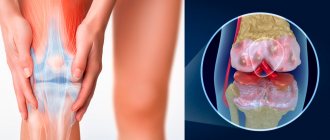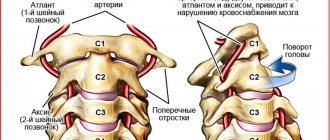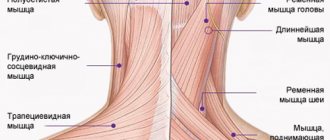What is sciatica
Sciatica (from the Greek ischias - seat) is a disease associated with pinching and inflammation of the sciatic nerve in the lumbosacral spine. Other names for this disease are lumbosacral radiculitis or sciatic neuralgia.
The sciatic nerve is the longest nerve in the body. It originates in the lower back from the nerve roots of the lumbar spinal cord and passes through the gluteal region throughout the lower limb.
An attack of sciatica is usually caused by damage to one or more roots of the lumbosacral spinal cord. But sciatica syndrome can also be caused by pinching of the sciatic nerve as a result of muscle spasm.
How to get rid of sciatic nerve pain at home
Sciatica is pain that occurs due to irritation or pinching of the sciatic nerve and is accompanied by symptoms such as burning and tingling in the leg, numbness in the fingers, and difficulty getting up from a sitting position.
The most common cause of sciatica is a herniated disc. In addition, inflammation of the sciatic nerve may be associated with problems such as spinal injury or infection, degenerative disc disease, spinal stenosis, pregnancy, isthmic spondylolisthesis, or piriformis syndrome.
Although there are many traditional treatments for sciatica these days, they only provide temporary pain relief. Additionally, most steroid injections can cause serious side effects.
You can use simple but equally effective home and natural remedies to reduce inflammation and pressure on the irritated sciatic nerve. We present a list of the most popular of them.
Hot or cold compresses
Compresses can reduce pain and reduce inflammation. The moist heat relaxes tight muscles that may be compressing the sciatic nerve. And cold reduces swelling around the nerve and also dulls pain.
Apply compresses to the affected area for 15-20 minutes for several hours until you feel relief.
Note: Do not use cold compresses if you have problems with circulation.
Turmeric
Due to its anti-inflammatory properties, turmeric is an effective natural remedy for sciatic nerve pain.
Boil one glass of milk, add one teaspoon of turmeric to it, sweeten the drink with honey and take it once or twice a day until it improves.
Massage
Massage can help relieve sciatica, especially if the problem is caused by muscle spasm, as well as relieve tension, stimulate blood circulation and increase range of motion.
Apply St. John's wort oil to the sore spot and massage the area until the oil is completely absorbed. Repeat the procedure two to three times a day. St. John's wort has an anti-inflammatory effect and helps relieve sciatica. Another option is to add three tablespoons of nutmeg to the sesame oil, heat the mixture, and then let it cool. Repeat the same movements as with St. John's wort.
Gymnastics
You should start therapeutic exercises one or two days after the onset of the attack. To reduce sciatic nerve irritation and improve lower back flexibility, you can do glute stretches.
To do this, lie on your back with your legs straight, relax your upper body and bend your right knee. Then grab your thigh with your hands and, as you exhale, gently pull it towards your chest until you feel a stretch. The other leg should remain on the floor. Hold this position for 20 seconds, taking deep breaths under control, and then carefully return to the starting position. Do the same with the other leg. Repeat the exercise three to five times with each leg.
Warming up the spine, rocking the knees, stretching the back muscles, and certain yoga poses (for example, cat-cow ligament, pigeon pose) also significantly relieve pain in the lower back.
Capsaicin
Cayenne pepper contains a natural analgesic, capsaicin. Therefore, preparations based on hot pepper are especially effective during the treatment of pinched sciatic nerve. Purchase a cream or ointment containing 0.025 to 0.075 percent purified capsaicin from your pharmacy and apply to the affected area up to four times daily for at least one week.
Valerian
Valerian is known to have a calming effect. In addition, the herb contains essential oils that help relax muscles and relieve tension. Valerian is also used as a sleep aid.
Take one capsule containing 150 mg of dry valerian root extract three times daily for several weeks. You can also brew tea with valerian.
willow bark
Willow bark contains phenolic glycosides with salicin and has an analgesic effect. Take willow bark extracts containing 120-240 mg of salicin daily for several weeks, and the pain will gradually subside.
Fenugreek
A wrap made from fenugreek seeds can also help reduce sciatic nerve pain due to its anti-inflammatory properties. To do this, grind a handful of fenugreek seeds and boil the resulting powder with enough milk to make a soft paste. Apply a thick layer to the painful area and wrap in plastic wrap for several hours. Repeat the procedure every day until the symptoms disappear.
Acupuncture
Acupuncture is another effective natural therapy that relieves pain, relaxes muscles, and helps the body heal itself.
Acupuncture should always be performed by an experienced professional.
Spinal manipulation
Chiropractic care is becoming an increasingly popular method of treating neck and back pain every year. Spinal manipulation involves various mechanical techniques on the joints to reduce the excitability of nerve endings associated with inflammation and other symptoms of sciatica.
Be sure to consult a chiropractor. Depending on the causes of sciatica, he will be able to select the correct treatment regimen.
Symptoms of sciatica
The clinical symptoms of sciatica vary. This may be a sharp shooting pain from the lower back to the buttock and down the back of the limb. Often observed:
- acute pain in the buttocks, which intensifies when sitting;
- shooting pain that occurs when trying to stand up;
- numbness or weakness in the leg;
- severe pain when walking or bending over.
With sciatica, pain in the buttock and the back of the thigh, often radiating to the lower leg and foot, is more pronounced than pain in the lower back.
Other symptoms of sciatica include pain in the leg such as burning, tingling, numbness, or pins and needles.
Most often, sciatica affects only one limb, but there are cases when the patient experiences pain in both legs.
The pain with sciatica is usually not as severe as with lumbago. In the initial stages of the disease, the symptoms of sciatica may not be very pronounced. But in advanced cases, such attacks of pain are possible that the patient cannot not only walk, but even stand and sit, and sometimes the pain does not subside even in a lying position and does not allow him to fall asleep.
Causes of sciatica
The immediate cause of sciatica is irritation or pinching of the sciatic nerve or the nerve roots that form it. But the reasons for this irritation can be different.
The most common cause of sciatica is a herniated disc, which compresses the sciatic nerve roots. Also, irritation of the nerve roots can be caused by osteophytes - bone formations on the joints of the spine that occur with osteochondrosis or spondyloarthrosis.
Spondylolisthesis (displacement of one vertebra relative to another), as well as inflammation and spasm of the lumbar or gluteal muscles (usually the piriformis muscle) can lead to pinching or compression of the nerve roots that form the sciatic nerve.
Attacks of sciatica can also be caused by injuries (including birth), tumors, internal bleeding, diabetes, infectious or gynecological diseases. Therefore, if the symptoms of sciatica are acute or bother you for a long time, you need to consult a doctor and undergo an examination in order to correctly diagnose the disease.
Clinical picture of sciatica
Most often, sciatica develops gradually. At the onset of the disease, slight pain is observed in the lumbar spine and (or) buttocks, as well as a feeling of fatigue and aching legs. But often these symptoms - pain in the lower back, buttocks, fatigue and tension in the legs - are considered overwork.
In the future, the unpleasant sensations may become longer and more intense. But often sciatica in the initial stage continues for quite a long time (up to several years), until a serious exacerbation is caused by some external cause, sometimes quite harmless - a jump, a sharp turn, a fall, heavy lifting, or banal hypothermia. It is with this reason that patients associate the onset of the disease, forgetting about the first symptoms that went unnoticed.
Causes of lumbago
Most often, pain in the lower back occurs against the background of osteochondrosis, herniated formations of intervertebral discs and spondyloarthrosis. It can also be the result of severe overstrain of the ligaments and muscles of the back. In approximately 30% of patients, the etiology of lumbago remains unclear, despite comprehensive diagnostics.
The following causes of the disease are identified:
- awkward sudden movements;
- spinal injuries;
- sudden rise in weight;
- staying in an uncomfortable position for a long time;
- hypothermia, especially with previous overheating of the body.
In addition, the causes that lead to the development of degenerative-dystrophic changes in the spine and the formation of intervertebral hernias are involved in the appearance of lumbago. An improper sedentary lifestyle or, conversely, excessive stress on the spine (professional sports, areas of activity associated with physical labor) plays a big role. Also etiological factors are: obesity, poor diet low in vitamins and microelements, some endocrine and metabolic disorders in the body.
Intervertebral disc damage
Mostly lumbago manifests itself in the initial stage of the degenerative process in the intervertebral disc. The latter loses its elasticity and structure. Its nucleus pulposus is deformed, “spreading” to the sides or moving to the side, most often back or back and to the side.
With movement and physical stress, the nucleus pulposus shifts even further, putting pressure on the annulus fibrosus of the disc, which contains sensory receptors. Irritation of peripheral sensory nerve endings causes a response impulse in the structures of the brain, which is manifested by pain, tonic tension of the lower back muscles and reflex reactions.
Vertebral displacement
Symptoms of lumbago can be caused by spondylolisthesis (slipping of an individual vertebra relative to the underlying one). More often, pathology occurs after an accident, an unsuccessful fall, prolonged exposure to an unphysiological position, or after sudden lifting of weights.
Displacement of the vertebral body outside the normal axis of the spine leads to pinching of the nerve trunks and the appearance of severe pain. In most cases, spondylolisthesis is detected at the level of L5-S1, less often - L3-L4. According to various authors, pathology occurs in 2-6% of the population.
Congenital vertebral anomalies
Qualitative and quantitative defects of the lumbar spine often manifest as pain. During sacralization (fusion of the sacrum and the fifth lumbar vertebra), lumbarization (separation of the first sacral vertebra from the sacrum) or fusion of several lumbar vertebrae, compression of the spinal roots may occur. Compression of nerve fibers causes severe pain.
When the shape changes, non-fusion of the vertebral bodies and arches, intervertebral hernias and other pathologies of the spinal column often develop. As a result, painful sensations of varying severity and disturbances in the motor and sensory spheres appear.
Rare causes of lumbago
Very rarely, lumbago occurs against the background of rheumatic diseases, some infectious diseases and tumor processes. In this case, the fibrous ring of the intervertebral disc itself or the ligaments adjacent to it may be affected.
Neoplasms can compress (benign tumors) or grow (malignant tumors) bone, cartilage, muscle and connective tissue structures. The pain is of a pronounced chronic nature. It may not stop for several months or even years.
Treatment of sciatica
When treating sciatica, it is first important to minimize movement in the affected limb to reduce irritation of the nerve roots. Rest is recommended, the bed should be flat, the legs should be bent at the knee and hip joint and slightly elevated (you need to choose a comfortable position).
In order to relieve pain and inflammation, as well as muscle spasms, analgesics, NSAIDs, and antispasmodics are used. Warming and pain-relieving ointments and gels are prescribed. In the future, physiotherapy, acupuncture, massage and exercise therapy are recommended.
However, modern medicine can offer effective and safe treatment, which can significantly enhance the effect of traditional medications, and in some cases, completely abandon drugs that are unsafe for health. This is a therapeutic anti-inflammatory pain relieving patch NANOPLAST forte.
Treatment of sciatica with therapeutic anti-inflammatory analgesic patch NANOPLAST forte
In the treatment of sciatica, the NANOPLAST forte therapeutic patch has shown high effectiveness. The use of this drug can quickly improve the patient’s condition - reduce pain symptoms, relieve muscle spasms.
Therapeutic pain-relieving anti-inflammatory patch NANOPLAST forte can be used both in the complex treatment of sciatica and as monotherapy. The patch is applied to the lumbar spine and, if necessary, to the gluteal region, depending on the location of the pain. Up to 3 patches can be used at the same time.
In order to get rid of sciatica, you need not only to relieve the pain symptom, but also to improve metabolic processes in the intervertebral discs, remove inflammation, eliminate muscle spasms, improve blood supply and nutrition of nerve endings, stop or at least slow down the development of osteochondrosis. The use of NANOPLAST forte allows you to solve this problem.
Thanks to the simultaneous influence of two physiotherapeutic factors - deep soft warming heat of infrared radiation and the influence of a magnetic field with specially selected characteristics - this innovative drug allows you to relieve pain and inflammation, improve blood circulation in the affected area, and reduce the dose of painkillers and anti-inflammatory drugs.
To relieve acute symptoms in the treatment of sciatica, a therapeutic patch is used for 3 to 5 days. The duration of the course of treatment is from 9 days. It is usually recommended to use the treatment patch in the morning for 12 hours, but it can also be used at night.
High efficiency, unique composition, long-term (up to 12 hours!) therapeutic effects, ease of use and affordable price make NANOPLAST forte the drug of choice in the treatment of sciatica.
The medical patch NANOPLAST forte is sold only in pharmacies.
Read more about NANOPLAST forte
Massage treatment
Like many diseases, the sciatic nerve is quite easy to cure with massage, since this causes a rush of blood, as well as heating of the massaged areas of the skin. It can be treated with a regular massage based on special oils, but a massage with honey and alcohol will be cheaper and more effective.
To do this, before the massage, dissolve 300 g of honey in a water bath. As soon as it boils, take it out. Do not let the mixture cool and, stirring constantly, slowly add 50 g of alcohol. After cooling, rub the alcohol-honey mass into the patient’s back until the hands begin to stick to the body. At the end of the procedure, rinse your back with warm water and keep warm for 2 hours to enhance the massage effect. Course: daily for 2 weeks.









